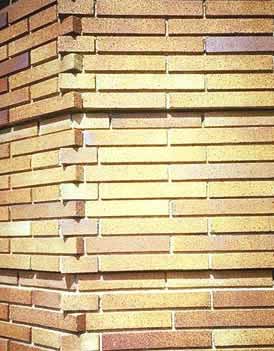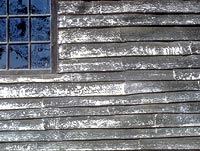


| Materials | |
| Craft Details | |
| checklist |
ASK
Do craft details play a major role in giving this historic building its
close-up visual character? Yes.
LOOK + IDENTIFY
You can appreciate the unusually long bricks in varying shades of yellow-brown.
While this brick is distinctive, the related craft details are perhaps
more important in establishing the visual character. Note the row of recessed
bricks every ninth course that creates a shadow pattern on the wall; the
deeply recessed mortar joints that create a secondary pattern of shadows;
and a toothed effect, where the bricks overlap each other at the corner
of the building.
WHAT IF THE CRAFT DETAILS ARE ALTERED? The cumulative effect of this artistry is critical to the arm's length visual character. It would be difficult to match if it were damaged, and the effect could be easily damaged through insensitive treatments such as painting the brickwork or by careless repointing.
WHAT SHOULD YOU DO?
Preserve character-defining craft details in the process of rehabilitating a historic building for a continuing or new use!
 |
LOOK closely at these unpainted oak clapboards made by hand, not produced by a machine. The boards vary in width and thickness and have overlapping feather-edge ends. The silver-gray weathering adds to the random quality of the clapboards. Replacing a hand-crafted board with a machine-made board would change the arm's length visual character.
|